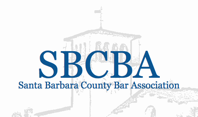CA Homeowner Bill of Rights
Governor Jerry Brown recently signed into law the Homeowner Bill of Rights to help struggling Californians keep their homes. This law’s objective is to avoid foreclosure whenever possible and prevent other negative effects of foreclosures on families, communities and the economy. This law will generally come into effect on January 1, 2013 and only pertains to first trust deeds secured by owner-occupied properties with one-to-four residential units, unless otherwise indicated. Some of the requirements of this law do not apply to smaller banks that, during the preceding annual reporting period, foreclosed on 175 or fewer properties with one-to-four residential units (CC2924.18(b)).
The full text of this law, also known as Assembly Bill 278 and Senate Bill 900, is available at www.leginfo.ca.gov.
In summary, the new law prohibits lenders from engaging in dual tracking, requires a single point of contact for borrowers seeking foreclosure prevention alternatives, and provides borrowers with the right to sue lenders for material violations of this law.
A few highlights:
– Cancelling a Pending Trustee’s Sale: A mortgage servicer must rescind or cancel any pending trustee’s sale if a short sale has been approved by all parties and proof of funds/financing has been provided;
– No Late Fees/Application Fees: A mortgage servicer cannot collect any late fees while a complete first lien loan modification application is under consideration, a denial is being appealed, the borrower is making timely modification payments, or a foreclosure prevention alternative is being evaluated or exercised;
– Binding if Loan is Transferred: Any written approval for a foreclosure prevention alternative shall be honored by a subsequent mortgage servicer in the event the borrower’s loan is transferred or sold.
Please visit. www.leginfo.ca.gov to view the full text of the new law.
